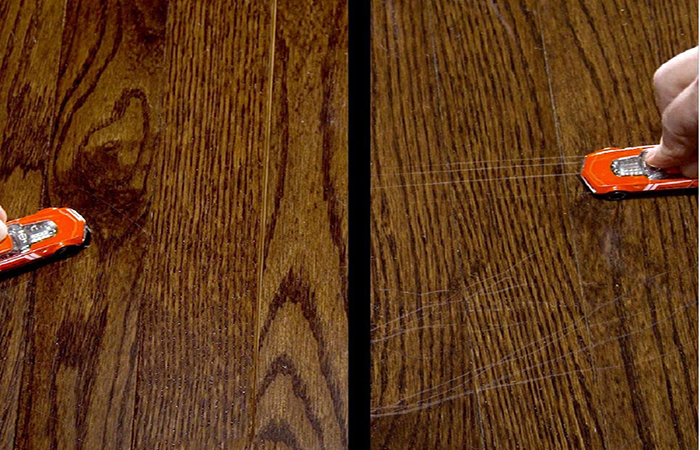
Scratched hardwood floors can instantly diminish the appeal of a room, but fear not! This comprehensive guide offers effective and affordable solutions for repairing scratched hardwood floors, enabling you to tackle various damage levels, from minor scuffs to deeper scratches. We’ll explore a range of DIY techniques, from minor touch-ups to more involved restoration methods, allowing you to revitalize your hardwood floors without breaking the bank. We’ll delve into the causes of scratches, the best repair methods for different types of damage, and how to prevent future scratches. This detailed guide is your ultimate resource for preserving the beauty and longevity of your hardwood floors! We’ll cover everything from simple repairs to advanced restoration techniques. Ready to tackle those scratches and save money?
Understanding Hardwood Floor Scratches
Identifying the Damage
Hardwood floors, while beautiful, are susceptible to scratches from everyday wear and tear. Understanding the source and severity of the damage is crucial for choosing the right repair method. Minor scratches, often caused by furniture dragging or dropped objects, are easily treatable with simple touch-up methods. Moderate scratches might require more involved techniques like filling, sanding, and refinishing. Deep gouges, on the other hand, usually necessitate professional intervention to avoid further damage and ensure proper alignment. This article will cover solutions for all levels of scratch severity, equipping you with the tools and techniques you need to handle various scenarios. This knowledge empowers you to tackle those scratches head-on, restoring the beauty and shine of your hardwood floors.
Quick Fixes for Minor Scratches
Touch-Up Techniques
Minor scratches often yield to quick and easy touch-up methods that can restore the floor’s original appearance. This involves carefully matching the color of the scratch with a wood-colored filler or stain. Apply the filler using a small brush or toothpick, ensuring a seamless blend. Let the filler dry completely and then gently buff or sand the area to match the surrounding wood. This method is ideal for superficial scratches and can be done with minimal effort. If the scratch is noticeable, this technique might not be sufficient to fully conceal the imperfection. Therefore, understanding your options is crucial for making an informed decision, and the most effective solution is to match the appropriate approach with the severity of the issue.
Repairing Moderate Scratches
Filling and Sanding
For moderate scratches, a more involved approach is necessary. Use a wood filler specifically formulated for hardwood floors. Choose a color that closely matches the surrounding wood. Apply the filler to the scratch using a small putty knife, ensuring a smooth application. Allow the filler to dry completely according to the product instructions. Once dry, sand the filled area with progressively finer grits of sandpaper to smooth it out and blend it with the surrounding floor. Remember that proper sanding is key for a seamless finish. This method, while more labor-intensive, offers a more comprehensive solution for moderate scratches.
Addressing Deep Gouges
Refinishing and Professional Help
Deep gouges typically necessitate professional intervention for a flawless repair. These extensive damages might require refinishing the affected area or even the entire floor. A professional can assess the damage and recommend the best course of action. They have the expertise and specialized tools to address these types of scratches effectively. Professional services might include deep cleaning, sanding, and refinishing the area to match the existing floor. Deep scratches that significantly alter the surface’s texture require expertise to maintain the overall integrity of the floor.
Preventing Future Scratches
Practical Maintenance Tips
Preventing scratches is paramount for preserving the longevity of hardwood floors. Use furniture pads or felt protectors under heavy furniture to prevent dragging and subsequent scratches. Regularly sweep or vacuum your floors to remove debris that could cause damage. Employ area rugs or mats to protect high-traffic areas from wear and tear. Consider placing mats at entry points to catch dirt and debris before they reach your hardwood floors. Proactive measures like these, as well as careful handling, will substantially reduce the occurrence of scratches in the long run. Following a proper cleaning and maintenance schedule is crucial for the health and appearance of your hardwood floors.
In conclusion, repairing scratched hardwood floors can be a rewarding DIY project with the right tools and techniques. By following the steps outlined in this guide, you can effectively restore the beauty and value of your floors while saving money. Remember to always prioritize safety and choose the most appropriate repair method for the severity of the damage. If you encounter significant damage or are unsure about the repair process, seeking professional help is always recommended. With proper care, your hardwood floors can remain beautiful and functional for many years to come. Want to keep your hardwood floors looking their best? Contact a qualified flooring professional for a free estimate today! We’re ready to help!